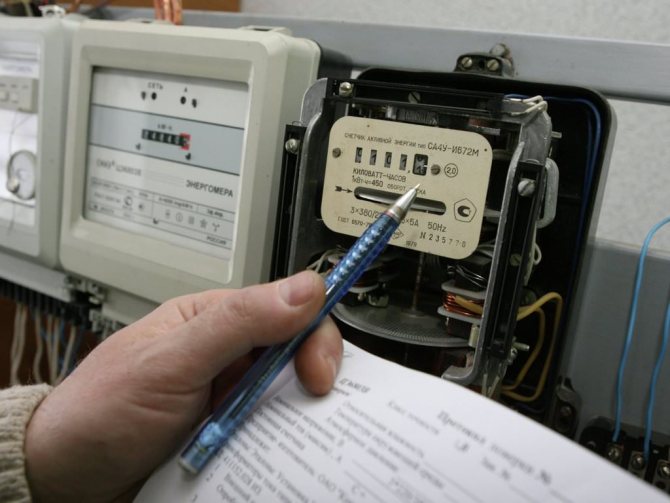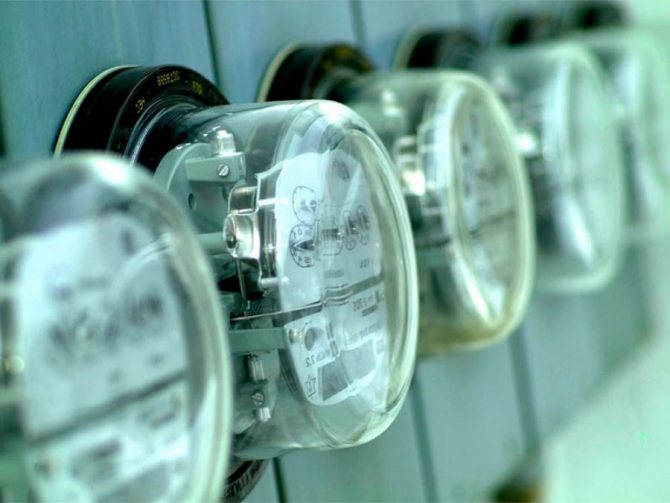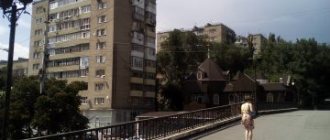What time does the night electricity tariff start from?
When the question arises: what can you save on, few people think that everything needs to start with the basics and, first of all, with electricity. For this purpose, people are presented with established tariffs for electricity. Many people are interested in what hour the nightly electricity tariff is valid, but everything largely depends on the city and the prices fixed there. Fees are usually set by local executive authorities, who also regulate all aspects and nuances of the state regulation of tariffs.
Payment of the electricity bill will directly depend on the tariff rate of the meter, and the time frame of the tariffs will also vary depending on this.
At night, many consumers practically do not use electrical appliances with the exception of stationary ones, such as a refrigerator, Wi-Fi router and others. In connection with this incomplete use, the question arises: how can you get around overpaying for electricity? This is exactly why the authorities came up with tariffs.
Tariffs for electricity meters:
- Electricity meter in two-tariff format. In this format, the time frame for the night tariff is from 11 pm to 7 am, and the day tariff from 7 am to 11 pm.
- Three-tariff electricity meter. This type of billing is a separate format, as it combines: night billing zone, peak and half-peak. The time frame of the night zone will range from 23 at night to 7 am, the timing of the peak zone will be from 7 am to 10, then from 17 pm to 21.
All remaining time will be counted as a half-peak zone.
Tariff for two zones (peak and half-peak) in St. Petersburg
| from 01.01.2020 to 30.06.2020 | from 07/01/2020 to 12/31/2020 | |
| Indicator (consumer groups broken down by rates and differentiated by day zones) | Price (tariff) in rub./kWh | Price (tariff) in rub./kWh |
| 1. Urban population | ||
| Daytime zone (peak and half-peak) 07:00 - 23:00 | 5.13 | 5.42 |
| Night zone (peak and half-peak) 23:00 - 07:00 | 2.96 | 3.12 |
| 2. Population living in houses equipped with stationary electric stoves | ||
| Daytime zone (peak and half-peak) 07:00 - 23:00 | 3.84 | 4.06 |
| Night zone (peak and half-peak) 23:00 - 07:00 | 2.22 | 2.34 |
| 3. Consumers equal to the rural population | ||
| Daytime zone (peak and half-peak) 07:00 - 23:00 | — | — |
| Night zone (peak and half-peak) 23:00 - 07:00 | — | — |
| 4. Gardening, gardening or dacha non-profit associations of citizens | ||
| Daytime zone (peak and half-peak) 07:00 - 23:00 | 5.13 | 5.42 |
| Night zone (peak and half-peak) 23:00 - 07:00 | 2.96 | 3.12 |
| 5. Religious organizations maintained at the expense of parishioners | ||
| Daytime zone (peak and half-peak) 07:00 - 23:00 | 5.13 | 5.42 |
| Night zone (peak and half-peak) 23:00 - 07:00 | 2.96 | 3.12 |
| 6. Electricity consumers in outbuildings (cellars, sheds) | ||
| Daytime zone (peak and half-peak) 07:00 - 23:00 | 5.13 | 5.42 |
| Night zone (peak and half-peak) 23:00 - 07:00 | 2.96 | 3.12 |
Valid time: night electricity tariff
Fixing a certain cost of electricity at night tariff and its duration solves a number of specific problems, such as: reduces excessive load on power grid systems, significantly reduces energy consumption, promotes healthy development of the ecological background of urban or rural areas.
The night tariff is especially important for consumers in rural areas, as it solves the problem directly by reducing the payment for the heating system.
People directly do not know what time the night zone starts and how much the light charge is charged, but this would save a decent annual amount.

Time frame for the night tariff:
- From 11:00 pm to 7:00 am. At a fixed rate day-night. The fee for such an electricity supply service is about 70% for ordinary users, and about 40% for institutions, subtracting the cost of the daily tariff from this amount.
- From 11:00 pm to 6:00 am. With a fixed differentiation tariff, in other words, a three-zone tariff. The fee for using such a tariff will be 35% for regular users and still 40% for institutions after deducting the amount for the half-peak period.
When deciding to switch to a certain type of tariff, you should consider its benefits and disadvantages and start directly from the needs and time of use of light.
Benefits:
- Saving money on paying for the use of a centralized heating system; this method is, first of all, beneficial for residents;
- For those involved in construction, such a tariff will become economically beneficial, as the payment for electricity will be reduced;
- Increasing the use of electricity services, the use of special equipment for generating electricity, and reducing the release of harmful substances into the environment will be a godsend for energy companies;
- Production savings benefit institutions.
The disadvantages are as follows. Electricity consumption still continues actively at night and violates the permissible noise level. Entrepreneurs successfully save on electricity bills at night, thereby covering the amount of wages for employees. Meters with phase functionality are quite expensive and can certainly break down quickly.
What is your electricity tariff?
First of all, you need to decide which group of electricity consumers you belong to, and what tariff you need to look at. Firstly
, electricity tariffs for the population are set depending on the type of settlement
( urban or rural
).
Secondly
, tariffs for urban residents vary depending on whether you have
a gas
stove or
an electric one
(electric heating devices).
It is worth considering that the electric stove (heating appliances) must be installed officially, in accordance with the design documents for your home. Thirdly
, electricity tariffs can be calculated based on different rates at different times of the day.
Most of us pay the so-called single-rate
tariff, in which the cost of 1 kilowatt/hour does not depend on the time of day.
However, an increasing number of people are switching to a two-zone
(day-night) or even
a three-zone
tariff. In this case, electricity will cost you less at night and more during the day.
Electricity and time: day-night tariff
The amount of payment for electricity increases significantly over time and this process is immediate. It is in connection with this problem that saving on electricity becomes one of the most pressing topics for discussion. The most effective way to save additional money while saving on electricity is to purchase a meter with phase functionality.
The time frame for the day-night tariff is from 11:00 p.m. to 7:00 a.m. inclusive, and from 7:00 a.m. to 11:00 p.m.
In order to switch to this method of calculating the tariff, it is necessary to purchase a two-tariff meter that will comply with the regime of this tariff, and also know the conditions that allow the user to switch to another tariff.
Conditions:
- No outstanding bills for the use of electricity supply services;
- Fee for the provision of tariff identification services for electricity supply;
- Drawing up a special agreement between both parties for the provision of electricity supply and consumption services.

In explaining the concepts of tariffs and their modifications, you can often see that the fees of the population and institutions are different and fluctuate in different percentages.
Who is included in the preferential group of the population:
- Residents of rural areas, villages in particular, various buildings of local residents, civilian areas at military facilities and prisons;
- Communities of housing owners, cooperatives of construction and housing scale, private entrepreneurs managing high-rise residential buildings;
- Summer cottages;
- Garage buildings.
Churches that rely on civic contributions also enjoy benefits.
Electricity tariffs in St. Petersburg for the second half of 2020
The table below shows tariffs for electricity. energy for all categories of the city’s population, approved by the Order of the Tariff Committee of St. Petersburg “On amendments to the order of the Tariff Committee of St. Petersburg for 2020.”
According to the order of the Government of the Russian Federation, it was decided to approve the attached indices for utilities for the 2nd half of 2020 for all constituent entities of the Russian Federation.
The published tariffs are intended for calculating the amount of payment for the e-mail used by the end consumer. energy based on individual meter readings.
The given tariffs include VAT, and the unit of measurement is RUB/kWh.
| from 01.01.2020 to 30.06.2020 | from 07/01/2020 to 12/31/2020 | |
| Indicator (consumer groups broken down by rates and differentiated by day zones) | Price (tariff) in rub./kWh | Price (tariff) in rub./kWh |
| 1. Urban population | ||
| Around the clock | 4.65 | 4.82 |
| 2. Population living in houses equipped with stationary electric stoves | ||
| Around the clock | 3.48 | 3.61 |
| 3. Consumers equal to the rural population | ||
| Around the clock | — | — |
| 4. Gardening, gardening or dacha non-profit associations of citizens | ||
| Around the clock | 4.65 | 4.82 |
| 5. Religious organizations maintained at the expense of parishioners | ||
| Around the clock | 4.65 | 4.82 |
| 6. Electricity consumers in outbuildings (cellars, sheds) | ||
| Around the clock | 4.65 | 4.82 |
Peak Electricity Zone: Time
The peak zone is a special time of day when there is a colossal load on the electricity supply network. This zone is considered double, as it gives the maximum load on electricity. The time interval of load on the network confirms that this zone is daytime, since when getting ready for work, people spend a lot of electricity, actively using household appliances such as a kettle, hairdryer, irons, toasters, TVs, etc.

There are several types of zones:
- Night zone. During the influence of the area of influence of this phase, the night time from 23-00 to 7-00 in the morning is the minimum when wasting electricity, since it is at night that all devices intensively producing electricity stop working and the load on the network becomes uniform.
- Morning peak. The format of this zone is distributed within the time frame from 7-00 to 10-00 in the morning, mainly during mass gatherings of people at their destinations and their intensive use of electricity.
- Half-peak. The area affected by electricity is from 10-00 am to 17-00 pm due to the selective return of residents home and a significant load on electricity.
- Evening peak. The zone extends over a time frame ranging from 17:00 to 21:00 in the evening and is determined by the massive return of people to housing complexes and the enormous use of electricity costs.
- Half-peak 2. Evening phase timing starts from 21-00 and 23-00 of active work with household appliances that consume huge amounts of electrical charge.
Limit consumption zone
When calculating energy consumption, Mosenergosbyt takes into account peak zones, which are represented by time intervals when citizens are in the apartment and using the resource in question.
This time is:
- morning hours from 07.00 to 10.00;
- evening time from 17.00 to 21.00.
In addition, there are 5 zones per day, depending on when energy is consumed. Night time is the period from 23.00 to 07.00, morning hours from 07.00 to 10.00, half-peak zones: from 10.00 to 17.00 and from 21.00 to 23.00, and evening peak from 17.00 to 21.00.
Electricity tariff day-night
The day-night electricity metering tariff is essentially two-phase and is already in effect in many cities of the Russian Federation, and in particular is popular in Moscow, since it very favorably coincides with the residents’ stay in their homes and the active time of using electricity.

The tariff is favorable:
- Users who actively use electrical appliances;
- Residents whose houses have warm floors or a convection heating system, warm baseboards, the power of which consumes electricity at any time of the day.
Principle of operation
The day is divided into three billing periods. Separate records are kept for each of them. The cost of electricity is the sum of costs for all three types.
When calculating the T1 period, electricity consumption during periods of highest consumer activity is taken into account. It is believed that this occurs from 7 am to 9 pm minus the interval from 10 am to 5 pm. At this time the level of payment is maximum.
The time that corresponds to T2 is night. If electricity was consumed from 11 pm to 7 am, then it is paid in accordance with the minimum tariff. If you plan resource consumption in T2, this can maximize the level of savings.
The T3 period (half peak) refers to the early morning and part of the evening time. We are talking about the time from 10 to 17, as well as from 21 to 23 hours. At this time, the tariff is usually reduced by about 30% compared to the maximum.
Advantages of night electricity tariff
The second most popular among electricity tariffs is the night tariff, since at this time residents do not actively consume electricity, and therefore can pay less for it, or, on the contrary, rationally adjust their use of equipment at night.

Benefit:
- The property has a summer house where electrical appliances are rarely used;
- If the place of electricity in the house is gas.
In order to understand the rules for installing a new meter, the conditions for payment for the tariff of any phase, it is necessary, as an example, to visit PetroElectroSbyt, where the functionality of a detailed review of each district of the city is possible. It is beneficial to install a meter for two tariffs that is valid by law.
Advantages and disadvantages
When using this mode, there are the following advantages:
- If the consumer uses a three-tariff meter, he will be able to distribute electricity costs in such a way that the most energy-consuming actions are performed during the period when the minimum tariff is in effect.
- Since such a counter is more expensive than a regular one, the difference in price can be compensated by saving resource consumption.
- Such an electric meter will allow you to detect attempts of unauthorized electricity withdrawal.

However, the option under consideration also has disadvantages:
- Some people use almost no electricity at all. In this case, the savings will also be insignificant.
- Some people cannot handle laundry, washing, dishes or cooking at night.
- Tariffs are becoming more expensive, and the tariff for a day zone may be higher than that used for a single-tariff meter. Therefore, the transition to a new payment system in some cases may be unprofitable.
- The relatively high cost of such a metering device.
You may be interested in this Procedure for replacing an electric meter
Important! The decision on the profitability of installing a three-tariff meter should be made taking into account the characteristics of the use of electricity and the possibilities of using the advantages of such an metering device.
What are the benefits of a night electricity tariff (video)
If you don’t pay attention to the fact that residents spend most of their time sleeping at night, then household appliances continue to work: for example, an air conditioner or the presence of heated floors in the apartment, a refrigerator, etc. In this case, it makes sense to switch to a differentiated electricity tariff, which will mark the beginning of saving money on utilities.
Comments
-2 #10 Philored 07/20/2018 04:03 They rip off as they want!
Payment for electricity is calculated for two nights, two peaks, and two half-peaks. To pay for one tax, the area of common property in the house is increased, and one also increases, i.e. in an apartment building 66.2 m/sq. ODN is 242.52 rubles. Every month they come up with something new to increase the cost of electricity. Quote
+3 Filored 07/20/2018 03:52 They rip off as they want! Payment for electricity is calculated: for two peaks, for two half-peaks, for two nights, they will soon start reading for three nights, etc. For ODN, the area of common property in the house is increased, and the payment for electricity increases. Perm
Quote
+2 Daria 07/04/2018 17:25 I quote Alexey:
After switching to two tariff modes, I started paying more. If at one tariff the cost of one kilowatt was 3.49 rubles/kW. then with two tariffs - 4.01 rubles/kW in the daytime and 1.64 rubles/kW at night. These tariffs apply in Yoshkar-Ola. What about in other cities?
Perm, day rate 2.71 rubles, night rate 1.73 rubles Quote
-5 Vova 06/02/2018 15:20 Quote Anna:
and on the basis of what law do garage buildings, summer cottages, as well as the civilian population at military installations enjoy benefits? We live in a military town. Mirny - do residents of this town have the right to enjoy benefits as civilians at military installations? three minutes ago
it’s just that deputies go to the dacha Quote
-2 Vova 06/02/2018 15:16 we are cash cows, why don’t we milk our noses
Quote
+1 vova 06/02/2018 15:14 I quote Alexey:
After switching to two tariff modes, I started paying more. If at one tariff the cost of one kilowatt was 3.49 rubles/kW. then with two tariffs - 4.01 rubles/kW in the daytime and 1.64 rubles/kW at night. These tariffs apply in Yoshkar-Ola. What about in other cities?
overnight with us 1.92 ekb Quote
-2 Vera 05.29.2018 17:51 In Volgograd, the same thing, when switching to a 2-tariff regime, they began to pay more. The cost of one kW is 4.02 rubles, daily 4.62 rubles. night 3.21 rubles So there is no benefit. We'll see before the end of the year and come back
Quote
+5 Tatyana 12/03/2017 21:11 I quote Alexey:
After switching to two tariff modes, I started paying more. If at one tariff the cost of one kilowatt was 3.49 rubles/kW. then with two tariffs - 4.01 rubles/kW in the daytime and 1.64 rubles/kW at night. These tariffs apply in Yoshkar-Ola. What about in other cities?
Happy, and here in the city of Toropets, Tver Region: Daytime tariff is 4 -16, and night tariff -2-82.
In addition, they manage to apply it at night not from 23.00, but from 23.40. Quote +3 Alexey 11/09/2017 1:19 pm After switching to two tariff modes, I started paying more. If at one tariff the cost of one kilowatt was 3.49 rubles/kW. then with two tariffs - 4.01 rubles/kW in the daytime and 1.64 rubles/kW at night. These tariffs apply in Yoshkar-Ola. What about in other cities?
Quote
-1 Anna 09.10.2017 14:15 and on the basis of what law do garage buildings, summer cottages, as well as the civilian population at military facilities enjoy benefits? We live in a military town. Mirny - do residents of this town have the right to enjoy benefits as civilians at military installations? three minutes ago
Quote
Update list of comments RSS feed of comments for this entry
Zones divided by hours
Peak : from 7:00 to 10:00 and from 17:00 to 21:00
Half-peak: from 10:00 to 17:00 and from 21:00 to 23:00 hours
Night: from 23:00 to 7:00 hours
| Indicator (consumer groups with tariff breakdown by rates and differentiation by day zones) | rub./kWh | |
| 1st half of the year | 2nd half | |
Population without electric stoves | ||
| 1.1 Single-rate tariff | 4,61 +1,77% | 4,75 +3,04% |
| 1.2 Tariff differentiated by two zones of the day | ||
| Peak zone | 4,9 +1,66% | 5,13 +4,69% |
| Night zone | 2,83 +1,80% | 2,96 +4,59% |
| 1.3 Tariff differentiated by three zones of the day | ||
| Peak zone | 4,93 +1,65% | 5,16 +4,67% |
| Half-peak zone | 4,61 +1,77% | 4,75 +3,04% |
| Night zone | 2,83 +1,80% | 2,96 +4,59% |
Population living in urban settlements in houses equipped in the prescribed manner with stationary electric stoves and (or) electric heating installations, and equivalent to them (tariffs are indicated in rubles, including VAT) ** | ||
| 2.1 Single-rate tariff | 3,46 +1,76% | 3,56 +2,89% |
| 2.2 Tariff differentiated by two zones of the day | ||
| Peak zone | 3,67 +1,66% | 3,84 +4,63% |
| Night zone | 2,13 +1,91% | 2,22 +4,23% |
| 2.3 Tariff differentiated by three zones of the day | ||
| Peak zone | 3,71 +1,64% | 3,89 +4,85% |
| Half-peak zone | 3,46 +1,76% | 3,56 +2,89% |
| Night zone | 2,13 +1,91% | 2,22 +4,23% |
Population living in rural settlements and equivalent (tariffs are indicated including VAT) *** | ||
| 3.1 Single-rate tariff | — — | — — |
| 3.2 Tariff differentiated by two zones of the day | ||
| Peak zone | — — | — — |
| Night zone | — — | — — |
| 3.3 Tariff differentiated by three zones of the day | ||
| Peak zone | — — | — — |
| Half-peak zone | — — | — — |
| Night zone | — — | — — |
4.1 Consumers equal to the population (tariffs are indicated in rubles including VAT): Gardening, vegetable gardening or dacha non-profit associations of citizens - non-profit organizations established by citizens on a voluntary basis to assist its members in solving general social and economic problems of gardening, vegetable gardening and dacha farming economy. Guarantee suppliers, energy sales, energy supply organizations that purchase electrical energy (power) for the purpose of further sale to categories of consumers equal to the population specified in this paragraph2. | ||
| 4.1.1 Single-rate tariff | 4,61 +1,77% | 4,75 +3,04% |
| 4.1.2 Tariff differentiated by two zones of the day | ||
| Peak zone | 4,9 +1,66% | 5,13 +4,69% |
| Night zone | 2,83 +1,80% | 2,96 +4,59% |
| 4.1.3 Tariff differentiated by three zones of the day | ||
| Peak zone | 4,93 +1,65% | 5,16 +4,67% |
| Half-peak zone | 4,61 +1,77% | 4,75 +3,04% |
| Night zone | 2,83 +1,80% | 2,96 +4,59% |
4.2 Consumers equal to the population (tariffs are indicated in rubles including VAT): Legal entities purchasing electrical energy (power) for the purpose of consumption by prisoners in the premises for their detention, subject to the availability of separate metering of electrical energy for these premises. Guarantee suppliers, energy sales, energy supply organizations that purchase electrical energy (power) for the purpose of further sale to categories of consumers equal to the population specified in this paragraph2. | ||
| 4.2.1 Single-rate tariff | 4,61 +1,77% | 4,75 +3,04% |
| 4.2.2 Tariff differentiated by two zones of the day | ||
| Peak zone | 4,9 +1,66% | 5,13 +4,69% |
| Night zone | 2,83 +1,80% | 2,96 +4,59% |
| 4.2.3 Tariff differentiated by three zones of the day | ||
| Peak zone | 4,93 +1,65% | 5,16 +4,67% |
| Half-peak zone | 4,61 +1,77% | 4,75 +3,04% |
| Night zone | 2,83 +1,80% | 2,96 +4,59% |
4.3 Consumers equal to the population (tariffs are indicated in rubles, including VAT): Religious organizations maintained at the expense of parishioners. Guarantee suppliers, energy sales, energy supply organizations that purchase electrical energy (power) for the purpose of further sale to categories of consumers equal to the population specified in this point 2. | ||
| 4.3.1 Single-rate tariff | 4,61 +1,77% | 4,75 +3,04% |
| 4.3.2 Tariff differentiated by two zones of the day | ||
| Peak zone | 4,9 +1,66% | 5,13 +4,69% |
| Night zone | 2,83 +1,80% | 2,96 +4,59% |
| 4.3.3 Tariff differentiated by three zones of the day | ||
| Peak zone | 4,93 +1,65% | 5,16 +4,67% |
| Half-peak zone | 4,61 +1,77% | 4,75 +3,04% |
| Night zone | 2,83 +1,80% | 2,96 +4,59% |
Time periods for tariffing
For 3 tariff electricity meters, tariffs are determined as follows.
When using three-tariff metering, night time begins at 23:00 and ends at 7:00 am. The rest of the day is divided into four parts: two periods with peak electricity consumption and two with half-peak.
Electricity is used the most during these times: late morning, afternoon and evening hours. At this time the maximum tariff applies. This happens from 10 to 17 and from 20 to 23 hours.

Taking readings
Semi-peak hours are from 7 am to 10 am and from 5 pm to 8 pm. At this time, the payment is reduced compared to the maximum, but remains higher than the nightly rate.
You may be interested in this Connecting an electric motor
To determine how beneficial such metering is, it is necessary to take into account the characteristics of energy consumption in the house. This is worth considering if the following circumstances apply:
- They are predominantly nocturnal.
- A person comes home from work no later than 17:00 and falls into the half-peak charging period for electricity consumption.
- People in the house are used to getting up early and thanks to this, using the morning time for their needs.
- Electrical devices are used that require a lot of energy to operate (washing machine or washing machine, electric heating, heated floor or others).
If your daily routine does not allow you to take advantage of the capabilities of multi-tariff meters or if powerful devices are not used in your home, then switching to their use will provide insignificant savings.

Three-tariff meter installed outside the house
The differences between two- and three-tariff metering devices are as follows:
- A three-tariff electricity meter remembers the previous indicators that were transferred for accounting.
- A different number of tariffs are used.
In order to decide which meter is more profitable, a two-tariff or a three-tariff one, you need to carry out calculations in accordance with the characteristics of electricity consumption for each possible type of metering.
Time zones and tariffs in different cities of Russia
In all regions of the country, the cost of electricity is different. With multi-tariff metering, electricity also costs differently. At different times of the day, the price may differ for consumers who have a multi-tariff meter installed.
The two-tariff accounting method consists of dividing the day into day from 7:00 to 23:00, and night from 23:00 to 7:00.
Tariffs, divided into three zones, are divided as follows:
- Peak - from 7:00 to 10:00, and from 17:00 to 21:00;
- Half peak - from 10:00 to 17:00, and from 21:00 to 23:00;
- Night - from 23:00 to 7:00.
Peak times may vary in some areas.
Prices per 1 kW/h for apartment owners with an electric stove are indicated in brackets.
| Region | Single tariff metering (RUB per 1 kWh) | Two-tariff metering (RUB per 1 kWh) | Three-tariff metering (RUB per 1 kWh) |
| Amur region | 3,73 (2,61) | Day - 4.29 (3.00) Night - 1.27 (0.88) | Peak - 4.85 (3.39) Half peak—3.73 (2.61) Night - 1.27 (0.88) |
| Moscow region | 5,56 (3,89) | Day - 6.39 (4.47) Night - 2.41 (1.68) | Peak - 7.23 (5.06) Half peak - 5.56 (3.89) Night - 2.41 (1.68) |
| Leningrad region | 4,27 (3,15) | Day - 4.49 (3.22) Night - 2.43 (1.79) | Peak - 5.12 (3.78) Half peak - 4.27 (3.15) Night -2.43 (1.79) |
| Murmansk region | 2,76 (1,92) | Day - 3.17 (2.21) Night - 1.44 (0.96) | Peak - 3.31 (2.31) Half peak - 2.76 (1.92) Night -1.44 (0.96) |
| Omsk region | 4,06 (2,84) | Day - 4.67 (3.27) Night - 2.59 (1.82) | Peak - 5.15 (3.61) Half peak - 3.50 (2.45) Night -2.59 (1.82) |
| Penza region | 3,51 (2,46) | Day - 4.04 (2.83) Night - 2.53 (1.77) | Peak - 4.23 (2.96) Half peak - 3.51 (2.46) Night -2.53 (1.77) |
| Samara Region | 4,17 (2,92) | Day - 4.61 (3.22) Night - 2.27 (1.59) | Peak - 4.63 (3.25) Half peak - 4.17 (2.92) Night -2.27 (1.59) |











